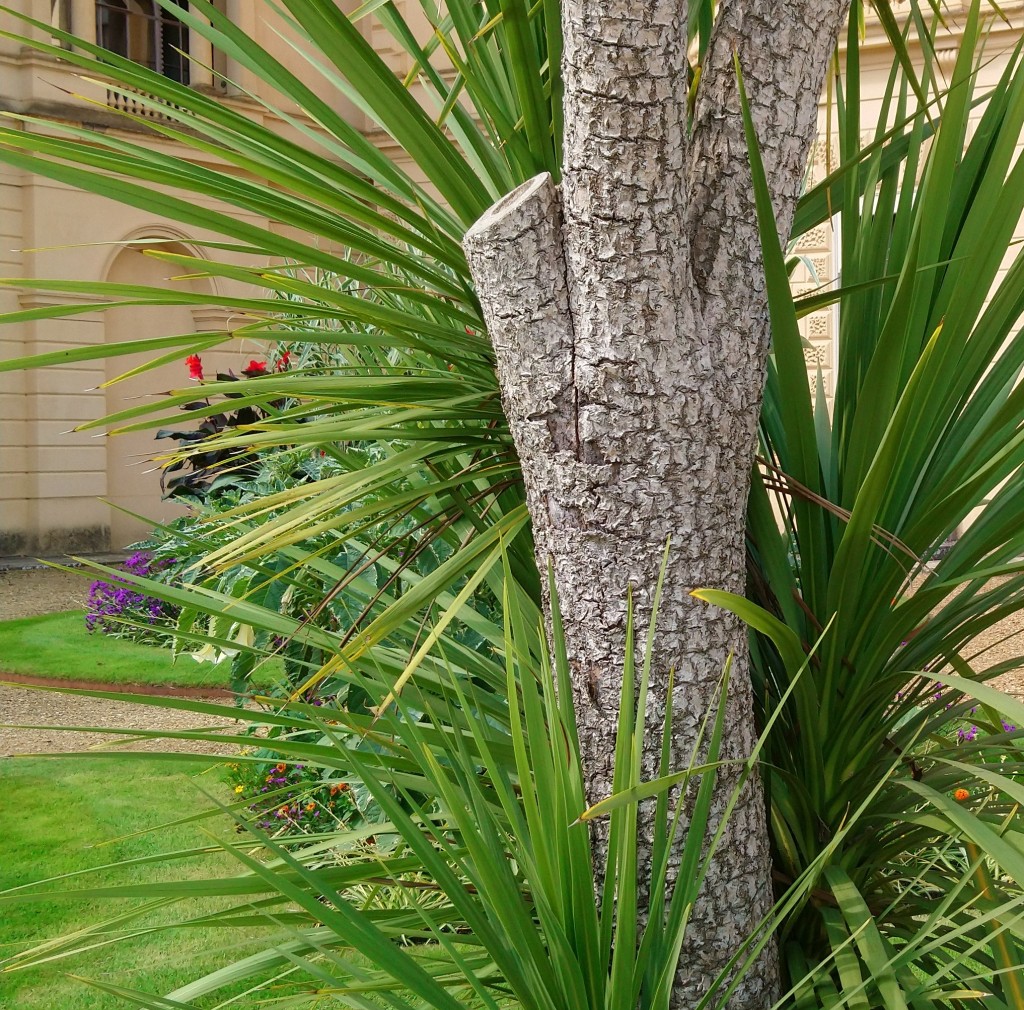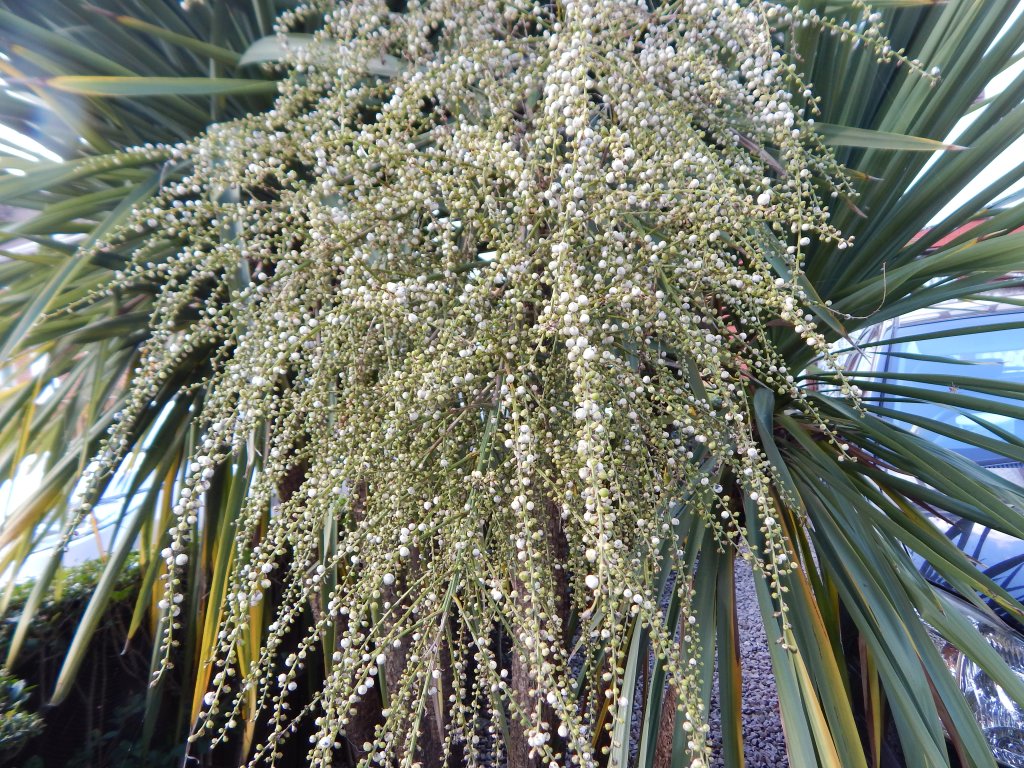
[093] Cordyline australis, New Zealand Cabbage Tree
Introduction
Cordyline australis, the New Zealand Cabbage Tree, is a plant that fifty years ago was an exotic house plant. Perhaps aided by global warming it is now frequently seen as a cultivated garden plant. In more southerly parts of Britain it can reach the size of a Tree.
It may be called just a Cabbage Tree or Cabbage-palm. In New Zealand it has many regional Maori names and in Britain it has been called the Torbay Palm or Torquay Palm.
Taxonomy
Kingdom – Plants
Division – Vascular Plants
Class – Angiosperms (Flowering Plants)
Clade – Monocots
Order – Asparagales
Family – Asparagaceae
Subfamily – Lomandroideae
Genus – Cordyline
Scientific Name – Cordyline australis
Several cultivars are available, some with purple-red leaves.
It was formerly placed in the genus Dracaena and is still sometimes called Dracaena as a houseplant.
Name
Cordyline comes from the Greek root kordyle meaning club, referring to its enlarged underground rhizomes. The Latin australis means south, not specifically Australia.
Monocot Trees
Most trees are either dicotyledon angiosperms (flowering plants) or gymnosperms (conifers) and these have a ‘secondary growth’ mechanism that enables the main stem or trunk and other branches to keep growing. It’s the process that forms tree rings.
Most monocots do not have secondary growth so they don’t grow very large, don’t form woody stems, and can’t become trees. A small number of monocots, such as palm trees and Cordyline, have a different mechanism of anomalous secondary growth that enables the trunk to keep growing year after year and hence to grow to form trees. This kind of secondary growth forms cylindrical trunks without tree rings.
Almost all monocot trees are palm trees in the family Arecaceae but there are a few others including Cordyline and Yucca. I am not sure whether their mechanism for secondary growth is exactly the same.

Description
Before it flowers, Cordyline australis has the typical structure of monocots with long thin pointed leaves emerging vertically. After its first flowering, it divides with several branches each having the same leaves at its end. The leaves may be from half a metre to a metre long. The trunk is grey, corky and fissured.



It produces masses of tiny white flowers on branched spikes.


Habitat and use
It is native to New Zealand, where variations in habitat have led to several different varieties.
It used to be a house plant in Britain but it now widely cultivated in gardens. Several cultivars are available.
Other Notes
When I was young, a little over fifty years ago, we had very ordinary garden plants that were of fairly local origin – with some exceptions. We had many types of rose bush, carnations, lupins, foxgloves, pansies and petunias and many others.
Indoors, houseplants were coming into fashion and these were exotic plants that we never thought would live outside as they came from hotter climates. Indoors we could imagine a plant growing to maybe thirty or forty centimetres.
Now I see many of these houseplants growing outside and growing to substantial sizes. I see Fatsia Japonica as a tree, Fuchsia as a hedge, and even Yucca and Cordyline growing as trees. I remember the first time I saw a Yucca in flower was abroad in a hotter climate and I never expected to see it here. Today on a short walk I passed several Yucca trees in full bloom all with huge colourful inflorescences. Cordyline australis, also generally now in flower, is much more common than Yucca.
See also
There is another plant, very similar to the New Zealand Cabbage Tree, but with red leaves. This is probably Cordyline fruticosa.
Unfortunately, Yucca didn’t make it into this blog because it flowers so late, but look out for it, particularly in October and November. The tree is very similar to Cordyline australis but the flowers come on a long flower stem and are much bigger and more colourful.
